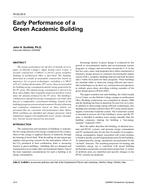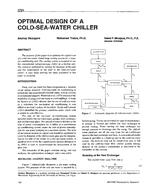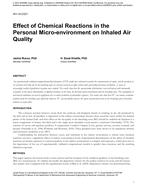This paper investigates the effectiveness of TiO2 photocatalytic oxidation of formaldehyde under different heating ventilation air conditioning (HVAC)-related air conditions. Formaldehyde, at a specific concentration, was injected into an enclosed HVAC test chamber, and circulated under UV irradiation though TiO22 nanofilm-coated stainless steel air filter. After two hours of HVAC operation under preset temperature, relative humidity (RH), and air velocity conditions, the formaldehyde photocatalyst decomposition effectiveness was 65–87%. At constant RH and air velocity, photocatalysis increased with an increase in air temperature. At 40–60% RH, and constant temperature and air velocity, the photocatalytic degradation rates were 78–89%. Under constant temperature and RH conditions, and air velocities of 0.4–1.3 m/s (1.3–4.3 ft/s), the formaldehyde decomposition efficiency was 70–86%. Therefore, in a sealed system, when one or all of air temperature, RH, and air velocity are increased, the formaldehyde photodegradation rate will be increased.
Citation: ASHRAE Transactions, 2010, vol. 116, pt. 2, Albuquerque, NM
Product Details
- Published:
- 2010
- Number of Pages:
- 15
- File Size:
- 1 file , 5.5 MB
- Product Code(s):
- D-AB-10-016


